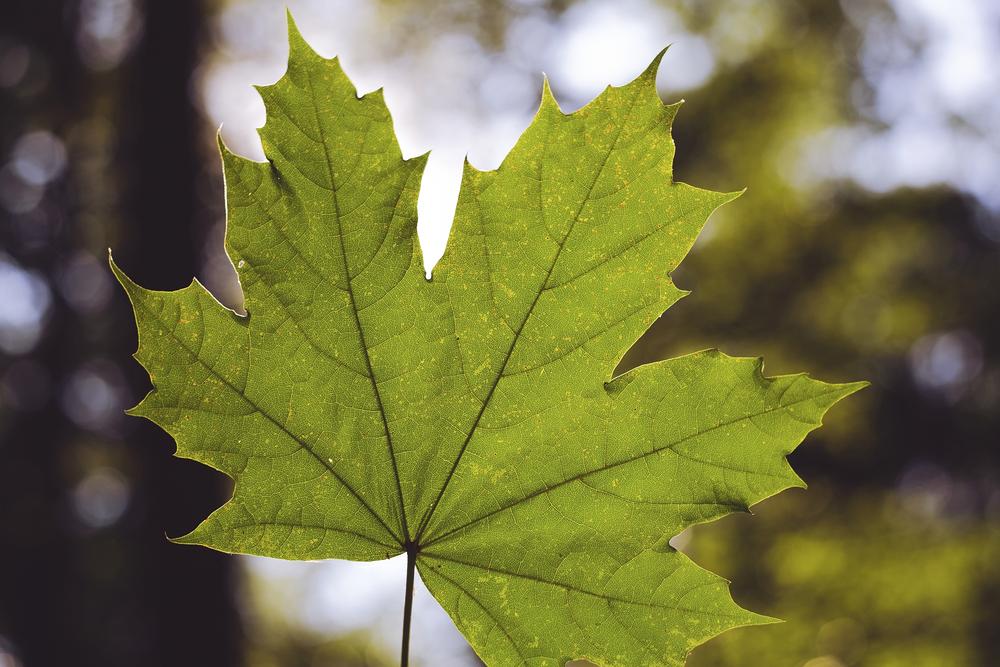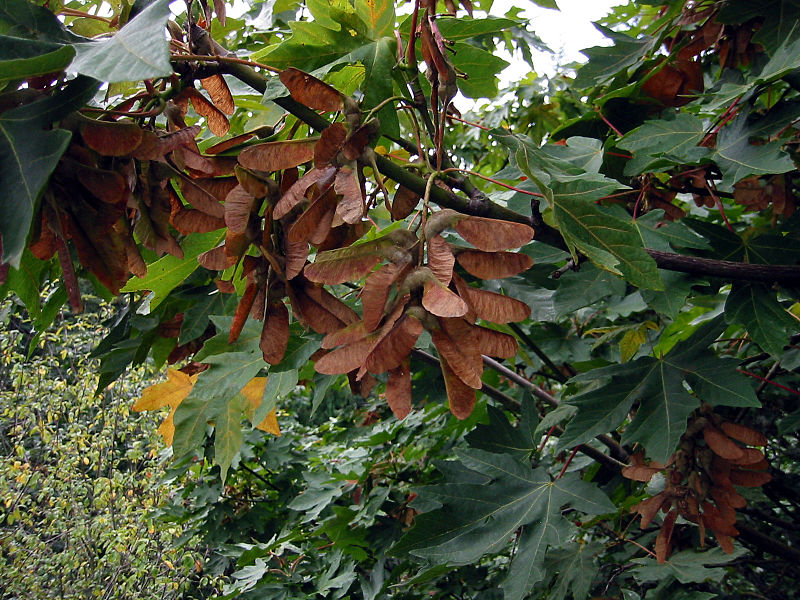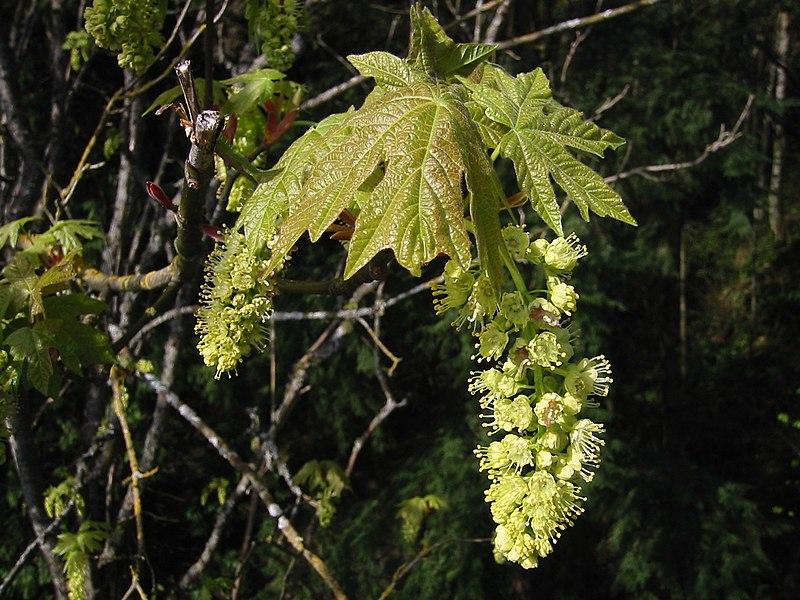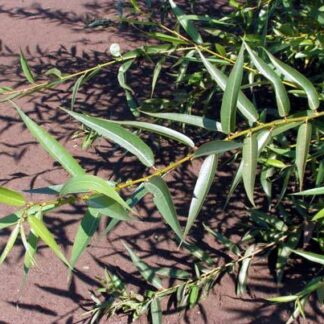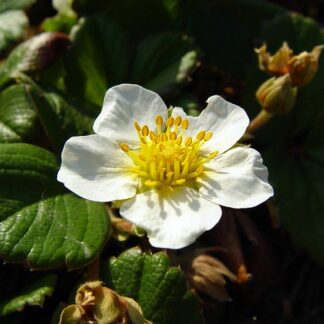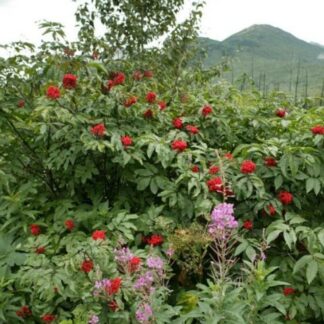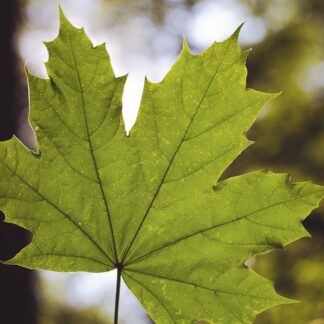Description
Sold in bundles of 10.
At a Glance: A tree with a large, often multi-stemmed trunk and a loose, broad crown of large leaves.
Height: 65-100 feet (20-30 meters) tall with trunk 3-5 feet (1-1.5 meters)diameter.
Stems: Bark is initially green, later becoming grey-brown and narrowly furrowed with age. Old bark is often covered with thick mats of mosses, lichens and ferns.
Leaves: Leaves are palmate shaped with five lobes, 10-30 cm (4-12 in) across, oppositely arranged on the branch. In the spring and summer leaves are dark green above and pale green below, then turning dull yellow in autumn.
Flowers: Ten to fifty flowers hang in loose clusters 5 cm (2 in) long that either appear with leaves or right before the emergence of leaves. Each flower is pale yellow, about 3 mm across.
Flowering Period: April.
Fruits: Typical maple-keys with two wings that spread out in a V- shape, called a samara. Size: 3-6 cm (1-2 in) long, 1-2 cm (.4-.8 in) across. Color: brown.
Appeal: Distinguished by its beautiful autumn colors of yellow, gold, and copper, this deciduous tree is fast growing, reaching 50-100 feet in height with a crown of over 60 feet in width, making it a terrific shade tree. It often develops several trunks, particularly when pruned. Leaves are palmate and reach up to 15 inches across. When young, the bark is smooth and grayish brown, later becoming darker brown with interlacing ridges and furrows.
Conservation Uses: Big Leaf Maple has many uses as a conservation species. It is favored as a riparian restoration tree due to its adaptability, vigor and growth rate, and size and stature. It quickly grows above weed competition and provides shade for streams. Once established on a site, it provides diverse wildlife habitat, including forage for deer and elk, nesting for birds, and its seeds are used as food by many species of birds and animals. A mature specimen provides considerable leaf litter for the soil, and is therefore considered a ‘soil-building’ species.
Commercial Value: Its wood is used in furniture and cabinet building, veneer, musical instruments and as fuel.
Helpful Tips: Grows in a wide range of sites that range from wet to dry soils and sunny to shady conditions but does best in full sun. As with any newly planted tree, it should be watered during the dry season for the first 2-3 years until it becomes established. They should be planted 5-8 feet apart for best success, but expect some mortality.
| Sun/Shade Tolerance | Hydrology | Elevation Range |
| (data not available) |
wet
moist
dry
Wetland Indicator Status: |
Found mostly west of the Cascades below 300 meters (Kruckeberg).
low elevation
mid elevation
sub-alpine
high elevation
|
| Soil Preferences | ||
|
sandy soils
gravelly soils
clay soils
muddy soils
peaty soils
|
well drained soils
shallow soils
deep soils
acidic soils
basic soils
|
humic soils
nutrient rich soils
nutrient poor soils
mineral soils
organic soils
|
| Wildlife Value | |
|
Berries
Seeds
Nectar for hummingbirds
Nectar for butterflies
Host for insect larvae
Thickets and shelter
Thorny or protective cover
|
Birds: The rotting limbs provide a food source for insect-eating birds such as grouse, grosbeaks, kinglets, siskins, vireos, warblers, sapsuckers, woodpeckers, nuthatches, song sparrows, finches, and quail. Fallen limbs of Acer macrophyllum provide habitat for cavity-nesting birds. Insects: Acer macrophyllum is a good nectar source for swallowtail butterfly larvae and bees. Fallen limbs of Acer Macrophyllum are quick to rot thereby attracting numerous insects. Mammals: Deer, muskrats, and beaver eat the wood and twigs. |
References:
Pojar, Jim, and Andy MacKinnon. Plants of the Pacific Northwest Coast: Washington, Oregon, British Columbia & Alaska. Revised ed. Redmond, Wash.: B.C. Ministry of Forests and Lone Pine Pub., 2004. Print.
“Sound Native Plants.” Sound Native Plants. Web. 31 Oct. 2014. <www.soundnativeplants.com>.

